Papers by Alison Pouliot
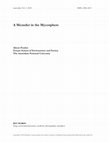
Environmentally-themed conferences are taking place all around the world as I type. More often th... more Environmentally-themed conferences are taking place all around the world as I type. More often than not, discussions occur within the confines of soporific seminar rooms, far from the actual environments discussed. As part of the Environmental Justice, “Collapse” and the Question of Evidence Workshop held in Switzerland in September 2015, I proposed a foray through local nature reserves as a way of enriching conversations – both through multisensory engagement and the catalyzing effect of movement, of walking. Multi-sensory perception – or aesthesis – enables us to consider the environment not as an inert background to discussions, but as intrinsic to dynamic and creative thinking. In situ discussions expose the spaces-in-between, reminding us that issues of environmental justice extend beyond Homo sapiens. They also foster opportunity to explore the intersections of wonder and understanding. This photo essay portrays the symbolic significance of fungi in exploring conference themes.
Gaia - Ecological Perspectives for Science and Society, Feb 2015
Australasian Plant Conservation, Mar 2014
PAN: Philosophy, Activism, Nature, 2013

Looking Within - Finding an environmental justice and global citizenship lens, 2013
Charismatic organisms are a keystone of global conservation for which flora and fauna have been t... more Charismatic organisms are a keystone of global conservation for which flora and fauna have been the focus. Meanwhile, another kingdom of organisms has been almost entirely neglected. The kingdom Fungi provides the connective fibre between all kingdoms through mutually beneficial symbioses, underpinning almost every terrestrial ecosystem on the planet. How can we be serious about environmental justice when we disregard an entire kingdom? Leading mycologists consider that ecosystem approaches to conservation that exclude fungi are so compromised as to be critically invalid.
Failure to recognise the role of fungi in soil health in industrialised farming is directly reflected in the global explosion of human health issues. Rethinking current agricultural approaches to incorporate fungi in the nutrient dynamics of soils could reverse this trend.
Innovative approaches to forging human connections with fungi are vital to their recognition and inclusion in conservation and agriculture. Fungi represent not only a critical part of our biodiversity, but are also deeply entwined in our cultural heritage. Civilisations have been enriched and extended by fungal remedies and wild edible fungi are harvested in over 80 countries providing vital subsistence nutrition. This paper will include an examination of cultural connections with fungi and the challenges of ensuring their protection, focussing on Australia and Europe. It will also examine the use of fungi in English speaking cultures as a means to reconnecting people with ‘natural’ environments.
Much of the dynamism of the natural world occurs in transition zones or ‘interface’ environments. This is also the domain of fungi. Likewise, the best possibilities for conserving both ‘natural’ environments and agricultural systems through inclusion of fungi are likely to emerge at the intersections of disciplinary thought.
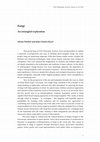
This special issue of PAN: Philosophy, Activism, Nature invited authors to explore a spectrum of ... more This special issue of PAN: Philosophy, Activism, Nature invited authors to explore a spectrum of perspectives and ways of thinking about kingdom Fungi. For many people, fungi are perplexing organisms. With their bizarre trophic modes, complex life histories and menacing mythologies, fungi arouse human responses from intrigue to repugnance. They have inspired the imaginations of scientists and aesthetes alike and are deeply enmeshed in the mythologies and traditions of many cultures. As the effects of anthropogenic change become ever more dauntingly apparent, the importance of fungi in underpinning the ear directly influencing our lives gains significance. However, despite their ubiquity and ecological importance, fungi are largely unregarded, especially within English---speaking cultures where mycophobia is the overwhelming norm. How do the perspectives of the arts and humanities broaden the ways in which we think about fungi? Conversely, how might fungi contribute to the evolution of our understandings of philosophy, literature and other disciplines? In exploring the theme of fungi with these questions in mind, the special issue combines analytical approaches with narrative forms commonly found in the humanities. As far as we are aware, this is the first special issue in an interdisciplinary, academic Australian journal to bring together these broad---ranging approaches to the fungal kingdom. 3 This variety of lenses through which to imagine or re---imagine this kingdom will hopefully improve possibilities for reaching wider audiences and for inspiring new approaches to considering and conserving fungi. One of the aims of the issue is to provide a forum for understanding how Homo sapiens might be included within the entangled lives of fungi. Indeed, human intersections with fungi have broader implications for a challenge faced by the humanities and arts today: learning to think integratively and ethically about nature and culture, particularly in terms of other species. This issue ranges in content from the cultural histories of fungus foragers to the microscopic mechanisms of spore ejection; from critical examinations of mushrooms in literature to imaginative reinterpretations of fungi in the visual arts. This variety of approaches to fungi is explored through descriptive essays, provocative theoretical papers, stories, poetry and visual representations. Each author offers an expression of
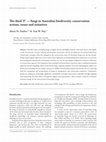
Mycologia Balcanica, 2010
Abstract: Australia’s biota, including fungi, is highly diverse and highly endemic with many spec... more Abstract: Australia’s biota, including fungi, is highly diverse and highly endemic with many species also highly
at risk of extinction. Despite ratifying international conventions and the development of national biodiversity
conservation strategies, little has changed in the conservation status of Australian fungi over the last decade.
Fungi remain largely neglected in most conservation legislation, notwithstanding their importance to ecosystem
functioning and consequently to humanity, and there are very few mycologists employed in reference collections
or conservation agencies. Few fungi have been included on formal threat status lists and a coordinated national
approach toward compiling a threat status list for fungi is urgently required. Given the anthropogenic impacts on
biodiversity including climate change, increases in wildfi re and subsequent habitat destruction, there is a pressing
need for recognition and incorporation of fungi in management and conservation initiatives. Community
groups are making an increasingly signifi cant contribution to fungal conservation, especially through mapping
and monitoring, but their eff orts need greater support from government. Th ere remains a need for a coherent
national strategy for the conservation of Australian fungi.
Articles by Alison Pouliot
Australian Garden History 27 (1), Jul 2015
This photographic essay examines a little known and often misunderstood component of gardens and ... more This photographic essay examines a little known and often misunderstood component of gardens and other landscapes – fungi.
Wildlife Australia magazine, Sep 2014
Ecologically industrious and alluringly diverse, Australia's puffballs, earthstars, jellies, agar... more Ecologically industrious and alluringly diverse, Australia's puffballs, earthstars, jellies, agarics and their mycelial kin merit your attention. Ecologist Alison Pouliot ponders our bonds with the mighty fungus kingdom.
Macedon Ranges Guardian, Feb 28, 2014
Wombat Forestcare Newsletter Issue 27, Mar 2014
We move from the late stages of summer and head into autumn and the fungi season. Gradually we di... more We move from the late stages of summer and head into autumn and the fungi season. Gradually we discover more about the species found in the Wombat Forest. Read about our bat surveys, the large numbers of Spotted Hyacinth Orchids this year and the Satin Flycatcher nesting near Trentham. Gayle Osborne (editor) & Angela Halpin (design)
Wombat Forestcare Newsletter Issue 23, Mar 2013
PAN: Philosophy, Activism, Nature, 2013
Wombat Forestcare Newsletter, Dec 2013
Town and Country Farmer, Aug 2012
This article is the first of three that will explore the
relationships between soil health, plan... more This article is the first of three that will explore the
relationships between soil health, plant health and
human health. Together they will address the very
important aspect of soil fertility and how small-scale
farmers can make a difference in restoring Australia’s
degraded agricultural soils. In particular the articles
will examine the undervalued but critically important
microbial/fungal populations in soils that are the
driving force behind fundamental environmental
processes and are the ultimate determinants of
soil and crop health. This will include practical
approaches to rebuilding our soils, improving our
biosystems and securing food production so as to
increase our resilience to the inevitable impacts of
climate change.
Wombat Forestcare Newsletter, 2013
Book Chapters by Alison Pouliot

Looking Within - Finding an environmental justice and global citizenship lens, 2013
Charismatic organisms are a keystone of global conservation for which flora and fauna have been t... more Charismatic organisms are a keystone of global conservation for which flora and fauna have been the focus. Meanwhile, another kingdom of organisms has been almost entirely neglected. The kingdom Fungi provides the connective fibre between all kingdoms through mutually beneficial symbioses, underpinning almost every terrestrial ecosystem on the planet. How can we be serious about environmental justice when we disregard an entire kingdom? Leading mycologists consider that ecosystem approaches to conservation that exclude fungi are so compromised as to be critically invalid.
Failure to recognise the role of fungi in soil health in industrialised farming is directly reflected in the global explosion of human health issues. Rethinking current agricultural approaches to incorporate fungi in the nutrient dynamics of soils could reverse this trend.
Innovative approaches to forging human connections with fungi are vital to their recognition and inclusion in conservation and agriculture. Fungi represent not only a critical part of our biodiversity, but are also deeply entwined in our cultural heritage. Civilisations have been enriched and extended by fungal remedies and wild edible fungi are harvested in over 80 countries providing vital subsistence nutrition. This paper will include an examination of cultural connections with fungi and the challenges of ensuring their protection, focussing on Australia and Europe. It will also examine the use of fungi in English speaking cultures as a means to reconnecting people with ‘natural’ environments.
Much of the dynamism of the natural world occurs in transition zones or ‘interface’ environments. This is also the domain of fungi. Likewise, the best possibilities for conserving both ‘natural’ environments and agricultural systems through inclusion of fungi are likely to emerge at the intersections of disciplinary thought.


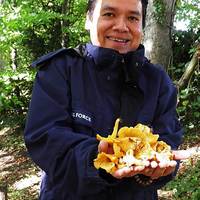



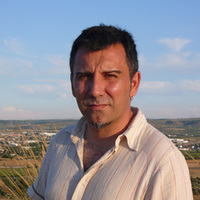



Uploads
Papers by Alison Pouliot
Failure to recognise the role of fungi in soil health in industrialised farming is directly reflected in the global explosion of human health issues. Rethinking current agricultural approaches to incorporate fungi in the nutrient dynamics of soils could reverse this trend.
Innovative approaches to forging human connections with fungi are vital to their recognition and inclusion in conservation and agriculture. Fungi represent not only a critical part of our biodiversity, but are also deeply entwined in our cultural heritage. Civilisations have been enriched and extended by fungal remedies and wild edible fungi are harvested in over 80 countries providing vital subsistence nutrition. This paper will include an examination of cultural connections with fungi and the challenges of ensuring their protection, focussing on Australia and Europe. It will also examine the use of fungi in English speaking cultures as a means to reconnecting people with ‘natural’ environments.
Much of the dynamism of the natural world occurs in transition zones or ‘interface’ environments. This is also the domain of fungi. Likewise, the best possibilities for conserving both ‘natural’ environments and agricultural systems through inclusion of fungi are likely to emerge at the intersections of disciplinary thought.
at risk of extinction. Despite ratifying international conventions and the development of national biodiversity
conservation strategies, little has changed in the conservation status of Australian fungi over the last decade.
Fungi remain largely neglected in most conservation legislation, notwithstanding their importance to ecosystem
functioning and consequently to humanity, and there are very few mycologists employed in reference collections
or conservation agencies. Few fungi have been included on formal threat status lists and a coordinated national
approach toward compiling a threat status list for fungi is urgently required. Given the anthropogenic impacts on
biodiversity including climate change, increases in wildfi re and subsequent habitat destruction, there is a pressing
need for recognition and incorporation of fungi in management and conservation initiatives. Community
groups are making an increasingly signifi cant contribution to fungal conservation, especially through mapping
and monitoring, but their eff orts need greater support from government. Th ere remains a need for a coherent
national strategy for the conservation of Australian fungi.
Articles by Alison Pouliot
relationships between soil health, plant health and
human health. Together they will address the very
important aspect of soil fertility and how small-scale
farmers can make a difference in restoring Australia’s
degraded agricultural soils. In particular the articles
will examine the undervalued but critically important
microbial/fungal populations in soils that are the
driving force behind fundamental environmental
processes and are the ultimate determinants of
soil and crop health. This will include practical
approaches to rebuilding our soils, improving our
biosystems and securing food production so as to
increase our resilience to the inevitable impacts of
climate change.
Book Chapters by Alison Pouliot
Failure to recognise the role of fungi in soil health in industrialised farming is directly reflected in the global explosion of human health issues. Rethinking current agricultural approaches to incorporate fungi in the nutrient dynamics of soils could reverse this trend.
Innovative approaches to forging human connections with fungi are vital to their recognition and inclusion in conservation and agriculture. Fungi represent not only a critical part of our biodiversity, but are also deeply entwined in our cultural heritage. Civilisations have been enriched and extended by fungal remedies and wild edible fungi are harvested in over 80 countries providing vital subsistence nutrition. This paper will include an examination of cultural connections with fungi and the challenges of ensuring their protection, focussing on Australia and Europe. It will also examine the use of fungi in English speaking cultures as a means to reconnecting people with ‘natural’ environments.
Much of the dynamism of the natural world occurs in transition zones or ‘interface’ environments. This is also the domain of fungi. Likewise, the best possibilities for conserving both ‘natural’ environments and agricultural systems through inclusion of fungi are likely to emerge at the intersections of disciplinary thought.
Failure to recognise the role of fungi in soil health in industrialised farming is directly reflected in the global explosion of human health issues. Rethinking current agricultural approaches to incorporate fungi in the nutrient dynamics of soils could reverse this trend.
Innovative approaches to forging human connections with fungi are vital to their recognition and inclusion in conservation and agriculture. Fungi represent not only a critical part of our biodiversity, but are also deeply entwined in our cultural heritage. Civilisations have been enriched and extended by fungal remedies and wild edible fungi are harvested in over 80 countries providing vital subsistence nutrition. This paper will include an examination of cultural connections with fungi and the challenges of ensuring their protection, focussing on Australia and Europe. It will also examine the use of fungi in English speaking cultures as a means to reconnecting people with ‘natural’ environments.
Much of the dynamism of the natural world occurs in transition zones or ‘interface’ environments. This is also the domain of fungi. Likewise, the best possibilities for conserving both ‘natural’ environments and agricultural systems through inclusion of fungi are likely to emerge at the intersections of disciplinary thought.
at risk of extinction. Despite ratifying international conventions and the development of national biodiversity
conservation strategies, little has changed in the conservation status of Australian fungi over the last decade.
Fungi remain largely neglected in most conservation legislation, notwithstanding their importance to ecosystem
functioning and consequently to humanity, and there are very few mycologists employed in reference collections
or conservation agencies. Few fungi have been included on formal threat status lists and a coordinated national
approach toward compiling a threat status list for fungi is urgently required. Given the anthropogenic impacts on
biodiversity including climate change, increases in wildfi re and subsequent habitat destruction, there is a pressing
need for recognition and incorporation of fungi in management and conservation initiatives. Community
groups are making an increasingly signifi cant contribution to fungal conservation, especially through mapping
and monitoring, but their eff orts need greater support from government. Th ere remains a need for a coherent
national strategy for the conservation of Australian fungi.
relationships between soil health, plant health and
human health. Together they will address the very
important aspect of soil fertility and how small-scale
farmers can make a difference in restoring Australia’s
degraded agricultural soils. In particular the articles
will examine the undervalued but critically important
microbial/fungal populations in soils that are the
driving force behind fundamental environmental
processes and are the ultimate determinants of
soil and crop health. This will include practical
approaches to rebuilding our soils, improving our
biosystems and securing food production so as to
increase our resilience to the inevitable impacts of
climate change.
Failure to recognise the role of fungi in soil health in industrialised farming is directly reflected in the global explosion of human health issues. Rethinking current agricultural approaches to incorporate fungi in the nutrient dynamics of soils could reverse this trend.
Innovative approaches to forging human connections with fungi are vital to their recognition and inclusion in conservation and agriculture. Fungi represent not only a critical part of our biodiversity, but are also deeply entwined in our cultural heritage. Civilisations have been enriched and extended by fungal remedies and wild edible fungi are harvested in over 80 countries providing vital subsistence nutrition. This paper will include an examination of cultural connections with fungi and the challenges of ensuring their protection, focussing on Australia and Europe. It will also examine the use of fungi in English speaking cultures as a means to reconnecting people with ‘natural’ environments.
Much of the dynamism of the natural world occurs in transition zones or ‘interface’ environments. This is also the domain of fungi. Likewise, the best possibilities for conserving both ‘natural’ environments and agricultural systems through inclusion of fungi are likely to emerge at the intersections of disciplinary thought.
In this presentation I expand the concept of this kingdom and its matrix of interconnectivity. I argue that considering a fungal future in all its manifestations is one of the challenges of the Anthropocene. Thinking beyond the human, and even the mammalian, is a project for the Environmental Humanities.
I explore both scientific and cultural perspectives on fungi in developing a thesis about their ecological and cultural significance. Imagining and engaging with fungi might enable us to move beyond discussions of issues of the Anthropocene and catalyse outcomes for change. That is, change that includes all life-forms in understanding the journey of biodiversity through the Anthropocene.
It seems the Anglophone world has little interaction with this kingdom, yet the 5000+ year old Ötzi the Iceman discovered on the Austro-Italian border two decades ago indicates ancient human-fungal associations. Indeed, in his first aid kit was the birch polypore fungus known for its antibiotic and styptic effects. That such curative properties may have been recognised in the Neolithic period yet have been forgotten by present-day Anglophone societies is a conundrum. Fungi have also truly been the forgotten kingdom of present-day biodiversity conservation. Will an entire kingdom of organisms also slip through the interdisciplinary cracks of the Environmental Humanities?
Alison Pouliot is an ecologist and environmental photographer. Her work melds scientific and artistic approaches in representing and communicating environmental issues. She is currently undertaking a PhD exploring fungal-human relationships at the Australian National University.
The 1980s witnessed a ‘mycological enlightenment’ both in Europe and Australia marked by a surge of interest to document and conserve fungi. Despite these advancements, fungi continue to be largely excluded from global conservation rendering current approaches highly questionable in their capacity to protect the earth’s biodiversity. Primary legislation and treaties governing biodiversity conservation in Europe and Australia have both largely omitted fungi.
This paper will explore how a cross-cultural examination of European and Australian conservation history offers opportunities to marry the extensive mycological history and knowledge in Europe, with the unique and astute approaches toward environmental conservation that are unfolding in Australia. In particular it will report on recent research into the historical perceptions of fungi over the last 150 years and how these have influenced attitudes toward this kingdom. While macrofungi have historically been studied predominantly by botanists and mycologists, a great suite of disciplinary lenses is necessary to understand and recognise the significance of fungi. Understanding historical perceptions of the value of fungi allows us to make conceptual shifts in our understanding of "nature", situate fungi within that understanding, and include fungi more profoundly within our lives.
The earth's biosystems have been acutely affected during the Anthropocene reflected in the substantial increase in species extinction. In the light of this decline, the importance of fungi, especially in maintaining vital ecosystem processes, becomes even more pertinent. To continue to exclude fungi from conservation, environmental history and our lives will have implications for the entire biosphere, including Homo sapiens.
This presentation explores the gap between growing interest in fungi and the step toward political action and change. Following an overview of some recent advancements in fungal conservation, I explore conservation possibilities through imaging technologies and visualism; in situ multi-sensory engagement with fungi; and recent fungal intrusions into other disciplines. I also ask how we might re-enchant our relationship with fungi and incorporate their affective dimensions.
Fungal conservation requires mycological expertise but also public support. It requires an understanding of the many ways fungi are valued. We may also need to consider how fungal conservation can adopt a more critical and inclusive approach to its role in society. What are the best ways to move forward and give fungi a stipe-up to their deserved place in biodiversity conservation?
Mind the gap. Take a large step. Get on board the train. It's stopping all stations to fungal conservation.
"
Using fungi as a conduit to reconnecting humanity with 'nature', I propose that in situ experiences of this forgotten kingdom are essential for the shift from 'knowing' to 'feeling'. Through sensory and emotional connection with fungi and the biosphere, perceptions and values transform. In particular,
I will report on a decade of anecdotal in-field observations of uniting people and fungi in both Australia and Europe. These findings feed into a current project that compares European and Australian cultural traditions in influencing perceptions of fungi.
Studies that explore sensory connection with fungi to inspire interest in 'nature' are virtually non-existent in English language. Hence, I endeavour to meld scientific, philosophical, ethical and sensorial arguments to not just inform, but to capture public hearts, minds and bodies in the view to inspire a more sensitive way of inhabiting the planet.
Thirty years on since the ‘fungal enlightenment’ do we need to reassess our approach to raising the profile and conservation of fungi? Are fungi being adequately conserved under surrogate approaches? Should we more actively engage the approaches and perspectives of other disciplines to inspire greater public interest and participation in fungal conservation efforts?
This paper will report on initial findings of a PhD project examining the discord between the diversity and ecological significance of fungi, and the amount of attention they receive in biodiversity conservation. A recent assessment of an historical archive of over 400 newspaper representations of fungi aims to unravel clues about how fungi have been perceived historically. Survey and interview techniques were also used to assess the perception of fungi by the general public and by those working in biodiversity management and policy. An examination of 40 Australian National Park management plans and various state and national level biodiversity strategies found fungi to be either excluded or grossly under-represented. Initial findings will be discussed and alternative approaches to catalyse fungal conservation that consider both Australian and European perspectives proposed.
The immense efforts of mycologists advocating for fungal conservation have revealed the complexities of the kingdom. But can all the knowledge we need to progress fungal conservation, come from mycologists alone? Certainly, we need more expertise, more taxonomic and distribution data, as well as threat status information. But how we meld this knowledge with the great spectrum of other ways in which fungi are translated, understood and valued? For example, how do we incorporate the affective dimension of fungal conservation? Many writers and thinkers have discussed the fundamental human need to interact with nature in an other than cognitive way - to re-enchant our relationship with nature. Perhaps fungal conservation could give greater focus toward re-chanting our relationship with fungi.
Fungal conservation requires mycological expertise but also public support. It requires a solid understanding of the many ways in which fungi are valued. We may also need to question how fungal conservation can adopt a more critical and inclusive approach to its role in society. This may include understanding how to embed social and ethical values into fungal conservation. Finally, this paper will make a brief comparative analysis of other overlooked groups of organisms such as invertebrates and whether fungal conservation can borrow from their conservation successes.
In this workshop, participants will learn how to photograph fungi in different contexts to capture both their scientific and aesthetic nature. We will focus on the particular challenges of macro-photography such as high contrast, low light, colour issues and techniques for controlling depth of field, addressing both technical aspects of exposure management and creative aspects of composition.
Following an indoor highly interactive session the afternoon will be spent in the field searching for fungi and putting techniques into practice.
This workshop will be presented by two professional photographers, Alison Pouliot and Valérie Chételat with plenty of opportunity for individual assistance with camera operation and photographic principles. It is suitable for participants with all kinds of cameras and levels of skill.
We will specifically address students' projects in exploring the art and science of effectively visualising and communicating environmental issues and eco-stories. Post-photography image management including metadata and workflow protocols will also be discussed.
The workshop includes an interactive and illustrated theoretical component followed by a field trip to put principles into practice.
This workshop introduces participants to the principles of camera operation and photographic technique for photographing environmental subjects including systematically documenting environmental change through the method known as Photopoint Monitoring.
It will explore both the art and science of effectively visualising and communicating environmental issues and eco-stories. Post-photography image management including metadata and workflow protocols will also be discussed. The workshop includes an interactive and illustrated theoretical component followed by a field trip to put principles into practice."
Images provide not just snapshots and memories, but are also a powerful tool for recording landscape change over time. They also provide an ideal way to communicate with community groups, funding bodies, politicians and others who may want to visualise environmental issues or see the results of Landcare actions.
Understanding the basics of camera operation and photographic techniques can increase the quality and interpretative value of images. Knowing what to photograph and how to best represent environmental subjects determines the impact and influence of images. This introduction to environmental photography will provide an overview of the most important considerations to assist you to more effectively visualise and document environmental issues and change.
Bring along your camera for this illustrated and interactive workshop.
"
It incudes an interactive hands-on session on the basics of fungus identification, fungal ecology, and the natural and cultural history of fungi. Fungi from the local area will be displayed, discussed and examined during the workshop. Cultural significances such as edibility & toxicity will be explored.
Following the indoor session we will venture into various local habitat types to search for species of interest. Supplementary notes and morning tea will be provided.
This foray begins with an overview of how fungi are identified in the field, and then takes us into the depths of the Wombat Forest to discover its fungal treasures.
Together we will seek fungi of interest and insights about their role in supporting the forest as well as their cultural significances.
Participants will learn the characteristics and techniques for identifying fungi using one's senses and assisted by field guides. Field notes will also be provided.
The foray will go ahead regardless of weather so be sure to wear sturdy shoes and wet weather gear and perhaps bring along a flask of hot tea if the weather is cold.
Participants will learn the basic characteristics and techniques for identifying fungi in the field. Ecological and cultural aspects will be discussed and where possible, edible and toxic fungi differentiated.
The foray will go ahead regardless of weather so be sure to wear sturdy shoes and wet weather gear and perhaps bring along a flask of hot tea if the weather is cold! If you have a field guide or magnifier, bring those too, otherwise there will be plenty to share.
Time: 12:30am - 4pm
Cost: $45
Bookings: info@creswicknc.org.au or 5345 2356
Further enquiries: Alison: alison@alisonpouliot.com
Neither fungi nor swamps rate highly in ideas about biodiversity and conservation. Yet both play vital roles in maintaining the health of terrestrial ecosystems and in replenishing soils.
Recent surveys of the Eddington Forest and Bells Swamp found that while they are inhabited by many species of animal and plants, past and current landuse practices and river regulation have taken their toll. How do the plants and creatures cope with these pressures along with periods of inundation and drying? What role do fungi play and how do they support plants and animals and the overall health and resilience of these systems?
This talk explores the ecological significance of fungi and endeavours to elevate both fungi and swamps to new levels of interest, care and concern.
This foray takes us deep into the curiosities of the fungal realm, exploring the clandestine relationships between fungi and plants. Following a delicious morning tea, we will explore the diversity of the kingdom and its natural and cultural history through a selection of collected fungi.
Participants will learn how to identify fungi and of their significance to ecosystem health. Fungal specimens from the local area will be discussed, examined and handled during this session.
After a light luncheon with a glass of local sparkling, we partake in a foray through the myriad habitats of Ard Choille Heritage Garden to search for fungi of interest.
Afternoon tea and supplementary notes are provided.
Time: 10:00 - 14:30
Bookings: Henni 5428 7836 or email: rcnh@westnet.com.au
Further enquiries: Alison: alison@alisonpouliot.com
Ecologist Ed Wilson famously reminded us that it is the little guys that run the world - fungi, invertebrates and various micro-organisms drive most of the ecological processes in our local forests and farms. Fungi, build architecture in soils. Influence hydrology. Sequester carbon. Recycle organic matter. Provide habitat. Form relationships with most plants and innumerable animals. Drive biogeochemical cycles, engineer atmospheric and geospheric chemistry. They are seriously busy!
The seminar will explore the diversity and importance of fungi and how we can offer them the best chance for survival in our local landscapes.
Time: 20:00 - 21:00
Cost: bookings essential
Bookings: Patricia patricia@scheltus.com
Further enquiries: alisonpouliot@anu.edu.au
Following the indoor session will be an exciting foray through various local habitat types to search for species of interest. Supplementary notes and morning tea will be provided.
Time: 10:30 - 16:30.
Location: Creswick
Bookings: 5345 2356 or creswick@ourneighbourhood.org.au
Further enquiries: Alison: alison@alisonpouliot.com
Time: 19.30 - 21.00
Further enquiries: Alison: alison@alisonpouliot.com
Cost: No charge
Time: 12:30 - 15:30
Location: Mt Macedon
Bookings: Angela 5427 1845 or reception@woodendnh.org.au
Further enquiries: Alison: alison@alisonpouliot.com
During the foray there will be opportunity to closely examine and discuss the various habitat and substrate types inhabited by fungi and their important role in sustaining terrestrial ecosystems. This foray also has greater context in the broader scale monitoring of curlew habitat restoration, to which fungi also contribute vital ecosystem functions. Participants will work with species lists, field guides, hand lenses and other equipment that will be provided on the day. This workshop is targetted at those especially interested in the ecology and survey of fungi.
Time: 13:00 - 17:00
Location: Shelbourne, Victoria
Bookings: Judy jcroc22@gmail.com or 0428 506 525
Further info: alison@alisonpouliot.com
This seminar explores the curious and compelling portrayal of fungi across cultures and time. Why are these organisms simultaneously objects of abhorrence and delight? How may this affect our perception and treatment of fungi today?
While we've been busy concocting fungal fantasies, fungi have been steadily working away underground to support the ecological function of the planet. This illustrated seminar takes participants deep into the fungal kingdom to explore the nether regions of their being.
Time: 18:00 - 21:00
Location: Collingwood
Cost: $10 (includes a Hungarian Mushroom Soup).
Bookings: Gabrielle centreforeverything@gmail.com or 0432 607 612
Further info: alisonpouliot@anu.edu.au
Time: 13:00 - 17:00
Location: Baringhup
Bookings: Judy jcroc22@gmail.com or 0428 506 525
Further info: alison@alisonpouliot.com
Afternoon tea and supplementary notes are provided.
Time: 12:00 - 16:30.
Location: Trentham, Victoria
Bookings: Julia 5424 1354 or mailto: admin@trenthamnc.org.au
Further enquiries: Alison: alison@alisonpouliot.com
Time: 12:30 - 15:30.
Location: Trentham, Victoria
Bookings: Julia 5424 1354 or email: admin@trenthamnc.org.au
Further enquiries: Alison: alison@alisonpouliot.com
Following the indoor session we will make an exciting foray through various local habitat types to search for species of interest. Supplementary notes will also provided.
Time: 10:30 - 16:30
Location: Stanley, Victoria
Bookings: Kelly 02 6043 7627
Further enquiries: Alison: alison@alisonpouliot.com
Following the indoor session we will make an exciting foray through various local habitat types to search for species of interest. Supplementary notes will also provided.
Time: 10:30 - 16:30
Bookings: Louise 0429 985 222
Location: Tumut, NSW
Further enquiries: Alison: alison@alisonpouliot.com
Pubic interest in these curious organisms is growing and their ecological significance acknowledged, but are Victoria's National Parks effectively managing for the conservation of fungi?
This illustrated talk delves deep into fungal realms and explores conservation issues along with their ecology, natural history, aesthetics and cultural resonances.
Time: 20:00 - 21:30
Location: Carlton, Victoria
Bookings: Sue vnpabwag.social@gmail.com
Further enquiries: Alison: alison@alisonpouliot.com
"
Landes. Derweil herrscht in Australiens Süden schon
seit zehn Jahren eine Dürre, die sich zur schlimmsten der
letzten tausend Jahre entwickelt. In den staubigen
Seen dörrt die Sonne die Fische, in den Salzkrusten stecken
Wo alles Leben verbleicht
wie verglast die Grillen, und weil die Farmer nach all denMissernten
das Geld für Futter undWasser nicht haben,
streift dasVieh sich selbst überlassen durch eine Landschaft,
in dermit den Farben alles Leben verbleicht.
Alison Pouliot hat die australische Apokalypse fotografiert."
australischen Heimat. Schnee- oder Eisfelder gibt es dort nirgends, aber das allein ist nicht der Grund für die Ergriffenheit, von der die Fotografin nach ihrem Gang zum Oberen Grindelwaldgletscher berichtet: Es war die Verwunderung darüber, dass «etwas Riesiges, Machtvolles und Altes» so zerbrechlich sein kann.
Darum erkennt man in diesen Bildern den Kummer einer Ökologin – aber auch den Blick auf ein Terrain, das die surrealen Fantasien einer Fotografin freisetzt.
Alison Pouliots Gletscherbilder sind noch bis zum 25. November in einer Gruppenausstellung in der Galerie 25 in Siselen zu sehen (www.galerie25.ch).
The cool Otway Forests are home to an incredible diversity of fungi. With their peculiar forms and amazing array of colours, fungi make intriguing photographic subjects.
This workshop extends knowledge from fungus workshops and surveys held in the region over the past six years. Participants will learn how to photograph fungi in different contexts to capture both their scientific and aesthetic nature. We will focus on the particular challenges of macro-photography such as high contrast, low light, colour issues and techniques for controlling depth of field, addressing both technical aspects of exposure management and creative aspects of composition.
Photographs are also an important part of the scientific survey of fungi. Images contribute to knowledge of the distribution and ecology of fungi. Requirements for taking appropriate images for scientific data repositories will also be discussed.
Following an indoor interactive theoretical session the afternoon will be spent in the field putting techniques into practice.
How do insights from mycology, taxonomy and the way science has been practiced intersect with other cultural perceptions?
The project represents a collection of voices in stories, anecdotes, histories and science gleaned across hemispheres and cultures. It comes alive particularly through direct engagement with people and fungi in their habitats - forests, woodlands, grasslands, deserts, backyards and forgotten places. It is embedded in the sensorial as much as the philosophical, through being present and direct interaction with fungi and their followers.
While some fungi can be problematic for eucalypts under certain conditions, many fungi support eucalypts through beneficial symbioses and protection from soil pathogens. Other fungi provide vital nutrients for eucalypts via the decomposition of organic matter. This workshop will examine the role of fungi in soils and their interdependencies with eucalypts. It will address the importance of encouraging relationships between beneficial fungi and eucalypts in local forests, farms and remnant vegetation. Participants are encouraged to bring along fungus specimens to the workshop.
Understanding the role of fungi in soils and ways to support and maximise their function benefits not just the soils, but all the associated organisms including humans. The session will include both an illustrated seminar and an interactive hands-on session where participants will examine various fungal specimens and resources.
Participants are encouraged to bring along fungus specimens to the workshop.
and edited by Alison Pouliot and Valérie Chételat. Our Wombat Forest delights us all with its fungal diversity
and abundance and in this issue our contributors from far and wide share with us their unique impressions.
Congratulations Alison, Valérie and all contributors for this exciting and thought-provoking edition of the
Wombat Forestcare newsletter. Gayle Osborne (editor) and Angela Halpin (design)